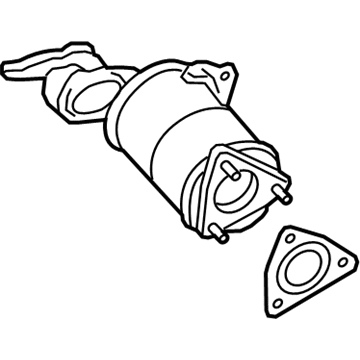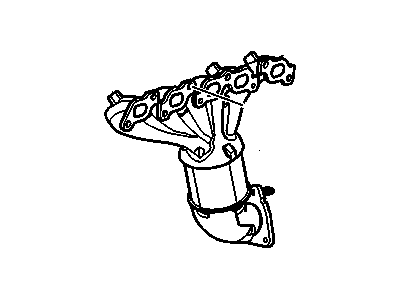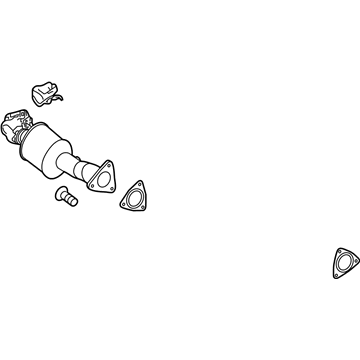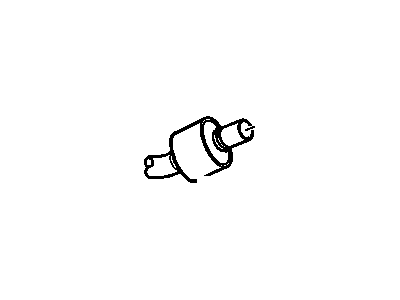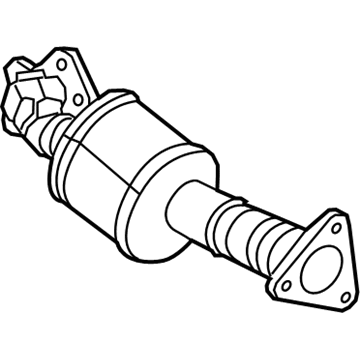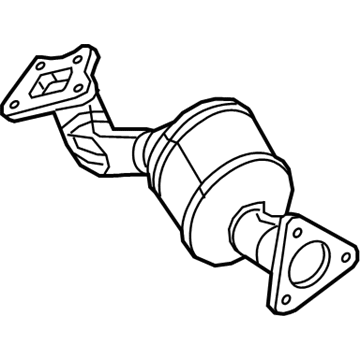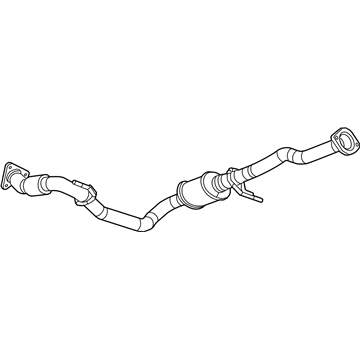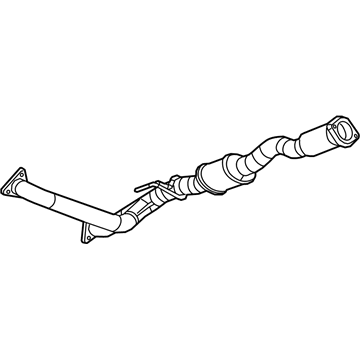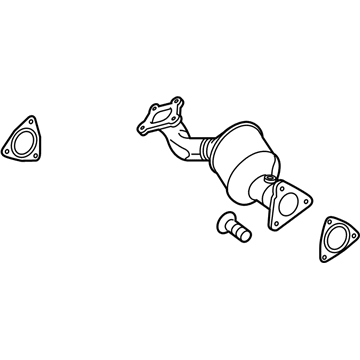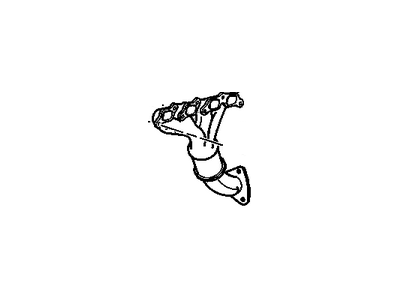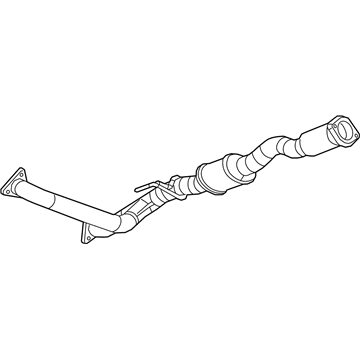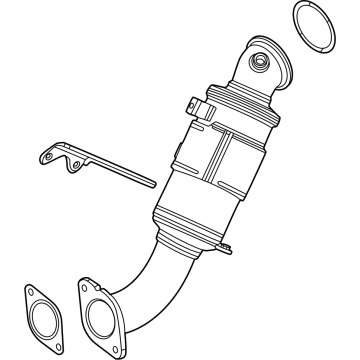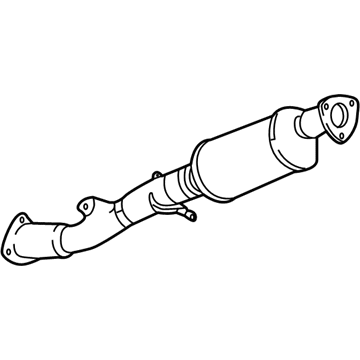My Garage
My Account
Cart
Genuine Chevrolet Colorado Catalytic Converter
Cat. Converter- Select Vehicle by Model
- Select Vehicle by VIN
Select Vehicle by Model
orMake
Model
Year
Select Vehicle by VIN
For the most accurate results, select vehicle by your VIN (Vehicle Identification Number).
24 Catalytic Converters found
Chevrolet Colorado CONVERTER ASM-W/UP 3WAY CTLTC
Part Number: 25203946$1234.95 MSRP: $1850.00You Save: $615.05 (34%)Chevrolet Colorado MANIFOLD ASM,EXH (W/ 3WAY CTLTC CONV)"KIT"
Part Number: 19418950$1707.18 MSRP: $2571.77You Save: $864.59 (34%)Ships in 1-3 Business DaysChevrolet Colorado 3Way Catalytic Convertor (W/Exhaust Manifold Pipe)
Part Number: 20909929$642.86 MSRP: $956.95You Save: $314.09 (33%)Ships in 1-3 Business DaysChevrolet Colorado CONVERTER ASM-CTLTC (W/ EXH MANIF PIPE)
Part Number: 85000357$985.57 MSRP: $1473.87You Save: $488.30 (34%)Ships in 1-3 Business DaysChevrolet Colorado 3-Way Catalytic Convertor (W/ Exhaust Rear Manifold Pipe)
Part Number: 25982291$1032.09 MSRP: $1544.03You Save: $511.94 (34%)Ships in 1-3 Business DaysChevrolet Colorado CONVERTER ASM,CTLTC (W/ EXH MANIF PIPE)<SPLIT>
Part Number: 19420260$948.76 MSRP: $1418.33You Save: $469.57 (34%)Ships in 1-3 Business DaysChevrolet Colorado CONVERTER ASM,W/UP 3WAY CTLTC (W/ EXH PIPE)
Part Number: 19420295$977.49 MSRP: $1461.66You Save: $484.17 (34%)Chevrolet Colorado CONVERTER ASM-3WAY CTLTC(W/EXH PIPE)
Part Number: 86780903$807.96 MSRP: $1205.97You Save: $398.01 (33%)Ships in 1-3 Business DaysChevrolet Colorado CONVERTER ASM-W/UP 3WAY CTLTC (W/ EXH PIP
Part Number: 85544903$897.34 MSRP: $1340.78You Save: $443.44 (34%)Ships in 1-3 Business DaysChevrolet Colorado CONVERTER,W/UP 3WAY CTLTC(W/EXH PIPE)
Part Number: 85000356$279.14 MSRP: $406.52You Save: $127.38 (32%)Ships in 1-3 Business DaysChevrolet Colorado 3Way Catalytic Convertor Assembly (W/ Exhaust Manifold P
Part Number: 15139252$724.36 MSRP: $1085.92You Save: $361.56 (34%)Ships in 1-3 Business DaysChevrolet Colorado MANIFOLD ASM,EXH (W/ 3WAY CTLTC CONV)"KIT"
Part Number: 19420196$2144.74 MSRP: $3222.24You Save: $1077.50 (34%)Ships in 1-3 Business DaysChevrolet Colorado CONVERTER ASM,3WAY CTLTC
Part Number: 19434298$986.33 MSRP: $1475.00You Save: $488.67 (34%)Ships in 1-2 Business DaysChevrolet Colorado CONVERTER ASM-W/UP 3WAY CTLTC (W/ EXH PIP
Part Number: 12729059$370.14 MSRP: $543.15You Save: $173.01 (32%)Ships in 1-2 Business DaysChevrolet Colorado CONVERTER ASM-W/UP 3WAY CTLTC (W/ EXH PIP
Part Number: 12729058$423.94 MSRP: $623.93You Save: $199.99 (33%)Ships in 1-2 Business DaysChevrolet Colorado NOX Catalytic Converter Assembly (W/ Exh Pipe)
Part Number: 84392383$1086.91 MSRP: $1627.04You Save: $540.13 (34%)Ships in 1-2 Business DaysChevrolet Colorado CONVERTER ASM,NOX CTLTC (W/ EXH PIPE)
Part Number: 19420259$1075.86 MSRP: $1544.43You Save: $468.57 (31%)Chevrolet Colorado 3Way Catalytic Convertor Assembly (W/ Exhaust Manifold P
Part Number: 15292649$524.38 MSRP: $778.25You Save: $253.87 (33%)Chevrolet Colorado 3Way Catalytic Convertor Assembly (W/ Exhaust Manifold P
Part Number: 20910202$516.89 MSRP: $766.95You Save: $250.06 (33%)Chevrolet Colorado 3Way Catalytic Convertor Assembly (W/ Exhaust Manifold P
Part Number: 15217083$488.37 MSRP: $723.93You Save: $235.56 (33%)
| Page 1 of 2 |Next >
1-20 of 24 Results
Chevrolet Colorado Catalytic Converter
The Catalytic Converter in Chevrolet Colorado helps in decreasing the toxic fumes emitted by the engine of the vehicle. Its main uses are reduction of hazardous emissions produced as a result of combustion which include carbon monoxide, nitrogen oxides and hydrocarbons by subjecting them to chemical reactions. This process is fostered by catalysts containing in the converter with the use of honey comb like structures to enhance flow of the gaseous products. For the past years Chevrolet Colorado has applied various types of catalytic converters in their models. Previous generations had ceramic beads and the subsequent ones are equipped with a honeycomb to increase the contact time of exhaust gases with the catalysts. The switch to three way catalytic converters has enabled better decrease of noxious emissions to the environment, as requisite by rules governing environmental concerns. In general, the Catalytic Converter is one of the key components that together with ECUs and other devices regulates the operation of vehicles and ensures their compliance with the requirements of exhaust emission standards.
Each OEM Chevrolet Colorado Catalytic Converter we offer is competitively priced and comes with the assurance of the manufacturer's warranty for the part. Furthermore, we guarantee the speedy delivery of your orders right to your doorstep. Our hassle-free return policy is also in place for your peace of mind.
Chevrolet Colorado Catalytic Converter Parts Questions & Experts Answers
- Q: What is the purpose of the catalytic converter and how can it be replaced on Chevrolet Colorado?A: The catalytic converter is an emission control device added to the exhaust system to reduce pollutants from the exhaust gas stream. A three-way (reduction) catalyst design is used. The catalytic coating on the three-way catalyst contains platinum and rhodium, which lowers the levels of oxides of nitrogen (NOx) as well as hydrocarbons (HC) and carbon monoxide (CO). The test equipment for a catalytic converter is expensive and highly sophisticated. If you suspect that the converter on your vehicle is malfunctioning, take it to a dealer or authorized emissions inspection facility for diagnosis and repair. To replace the converter, raise the vehicle and support it securely on jackstands. Remove the bolts and detach the catalytic converter header pipe from the exhaust manifold. Remove the catalytic converter-to-muffler flange nuts and push the muffler back far enough for the studs to clear the converter flange. Remove the catalytic converter and pipe assembly. Clean the carbon deposits from the mounting flanges. Installation is the reverse of removal. Note: Because of a Federally mandated warranty which covers emissions-related components such as the catalytic converter, check with a dealer service department before replacing the converter at your own expense.
- Q: What are the important considerations for inspecting and repairing the Catalytic Converter,Exhaust Pipe and Muffler on Chevrolet Colorado?A: The exhaust manifolds, catalytic converters, muffler, resonators, the tailpipe and all connecting pipes, brackets, hangers and clamps are the components of the exhaust system. The mounting brackets and rubber hangers connect the exhaust system to the body. It is important to note that installation errors with any of these parts may cause excessive noise or vibration. In addition to this, regular checks should be conducted on it to ensure safety and silence. Inspect for damaged/bent parts, open seams/holes/loose connections/excessive corrosion or other defects which might permit exhaust fumes into the vehicle. Additionally, examine the pipe connections for leakage and hangers for wear and tear. Do not forget to inspect the catalytic converter when you are going by the exhaust system. In other words, decayed components of an exhaust should never be repaired but rather they need new ones. It will take welding equipment if these items have corroded together too much; in this case a muffler repair shop can remove corroded sections by means of a cutting torch as an easy way out. If you have ordinary tools at home you can save money by cutting with a hacksaw off those old components or better still use special pneumatic chisels if you have compressed air at hand. However, if you decide doing it alone so as to economize just cut off old parts with a hacksaw blade. Also use special pneumatic-cutting chisels if you have access to compressed air for doing this job yourself at home.Be careful as there is a danger of metal chips hitting your eyes so you'd better put on some protective goggles; besides it is also recommended wearing work gloves protecting your hands.Well then start taking out from rear end its car parts until reaching front end.Whenever dismounting the elements comprising systems' components it is important to put penetrating oil on all joints.The new gaskets should replace old ones, also it is necessary to install new hangers and clamps.Use anti-seize compound on the threads of all exhaust system fasteners during re-assembly. Besides, there should be enough space between those parts newly installed and all areas of the underbody that would protect the interior carpet and insulation from being damaged by overheated floor pan. Be especially concerned about the catalytic converter and heat shield. Every now and then, check the heat shield for cracks, dents or loose and missing nuts/bolts.It is important to inspect the converter for cracks or other damage.If a catalytic converter becomes bad it must be replaced immediately.
Related Chevrolet Colorado Parts
Browse by Year
2024 Catalytic Converter 2023 Catalytic Converter 2022 Catalytic Converter 2021 Catalytic Converter 2020 Catalytic Converter 2019 Catalytic Converter 2018 Catalytic Converter 2017 Catalytic Converter 2016 Catalytic Converter 2015 Catalytic Converter 2012 Catalytic Converter 2011 Catalytic Converter 2010 Catalytic Converter 2009 Catalytic Converter 2008 Catalytic Converter 2007 Catalytic Converter 2006 Catalytic Converter 2005 Catalytic Converter 2004 Catalytic Converter

